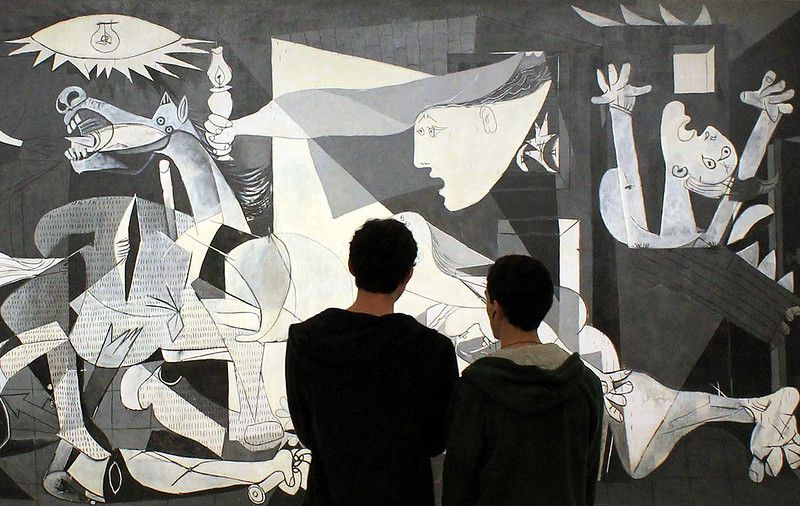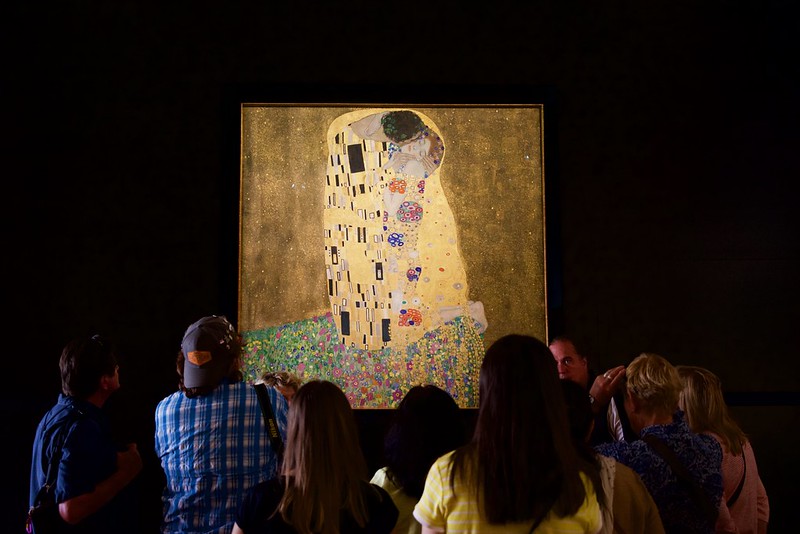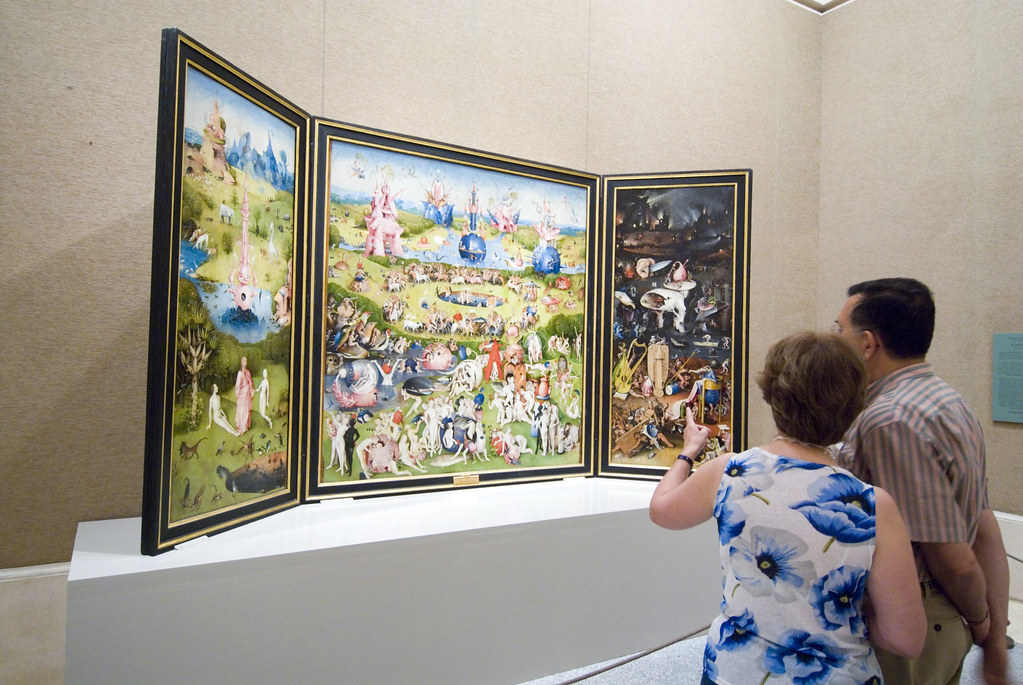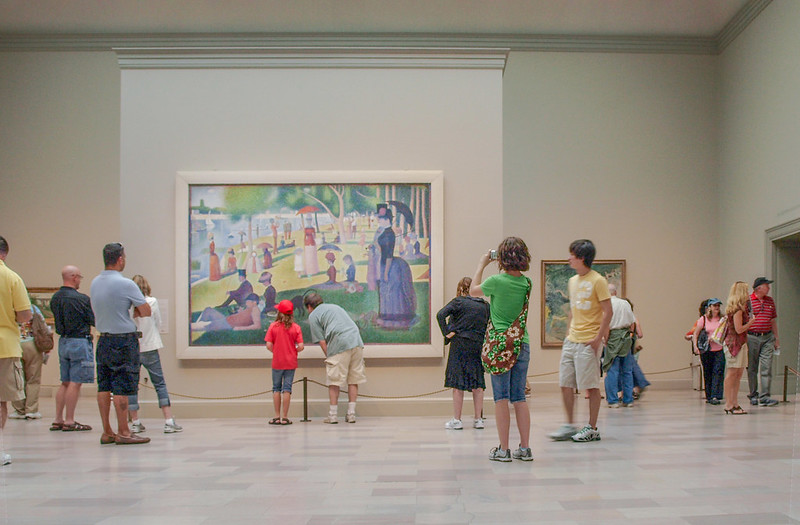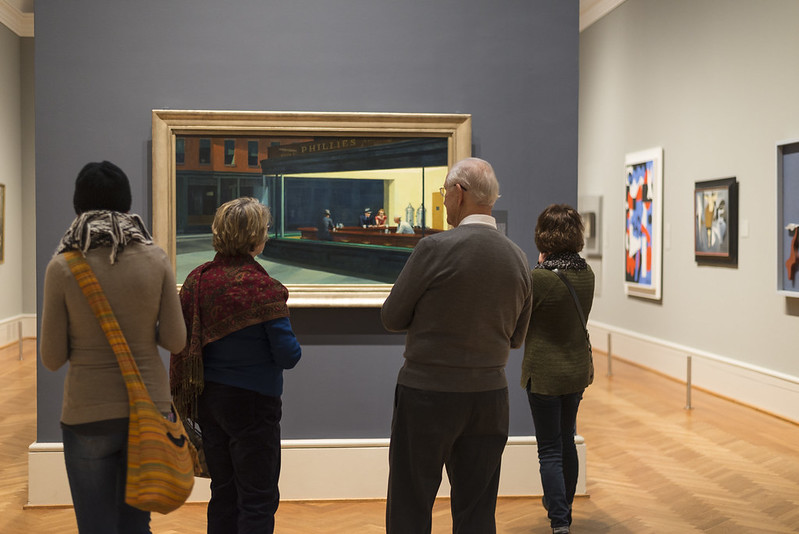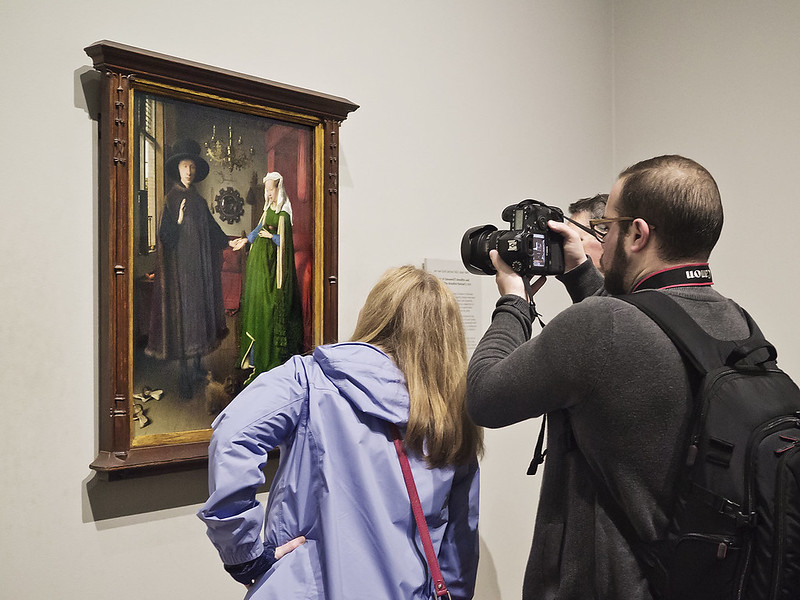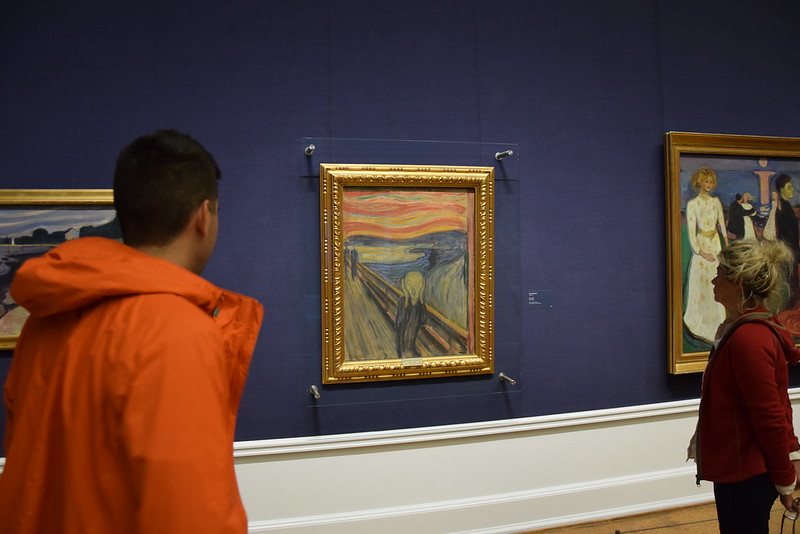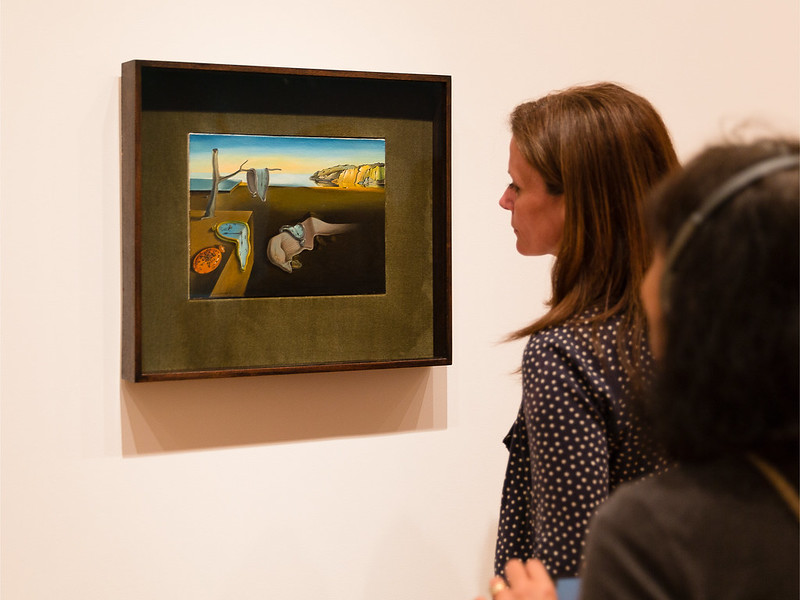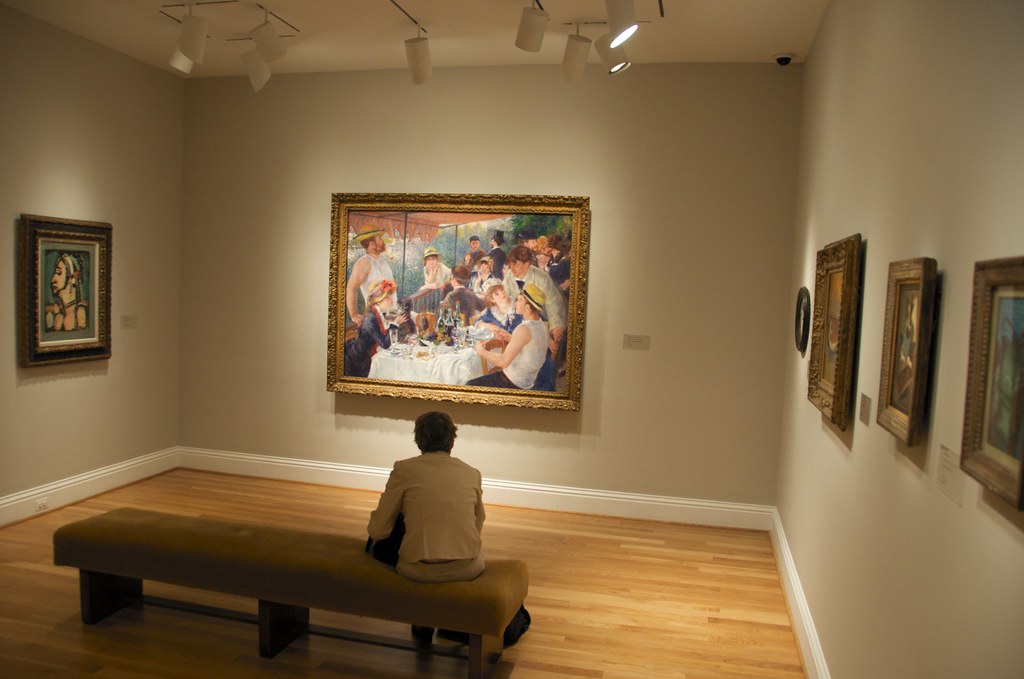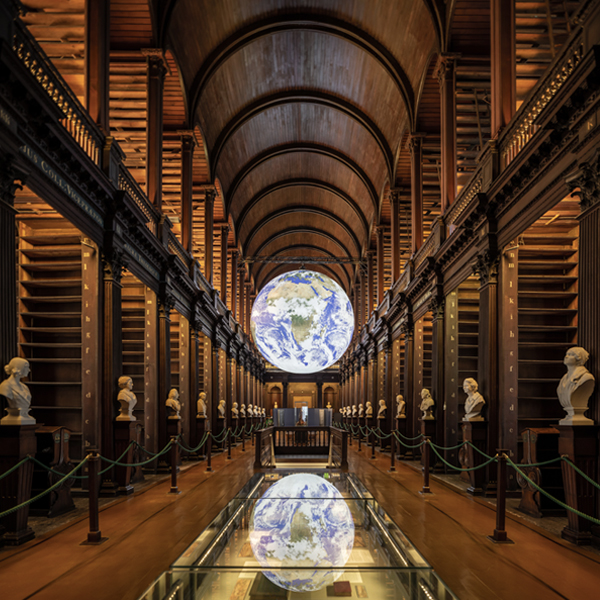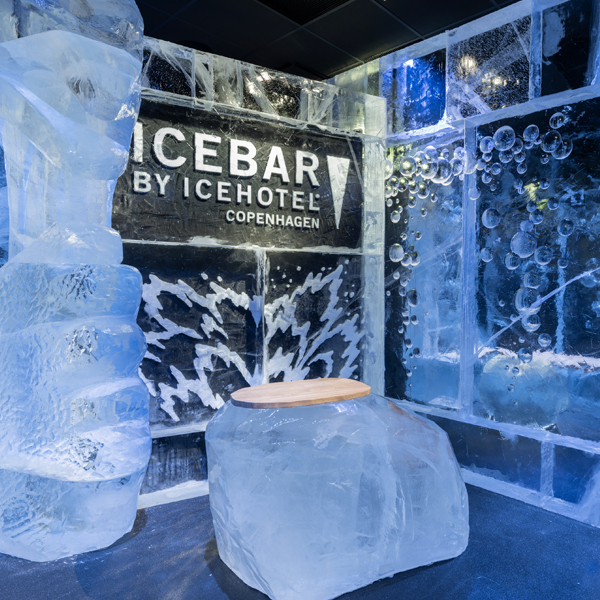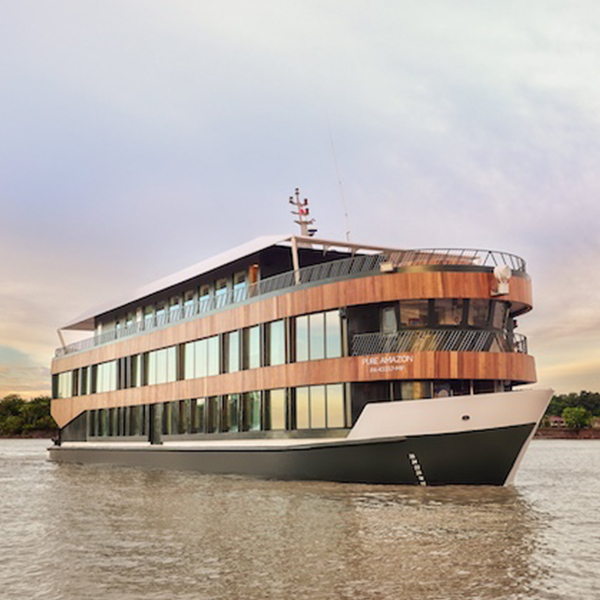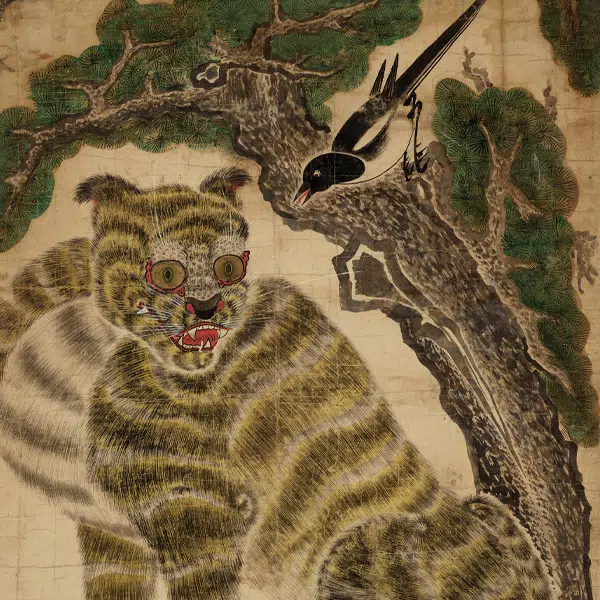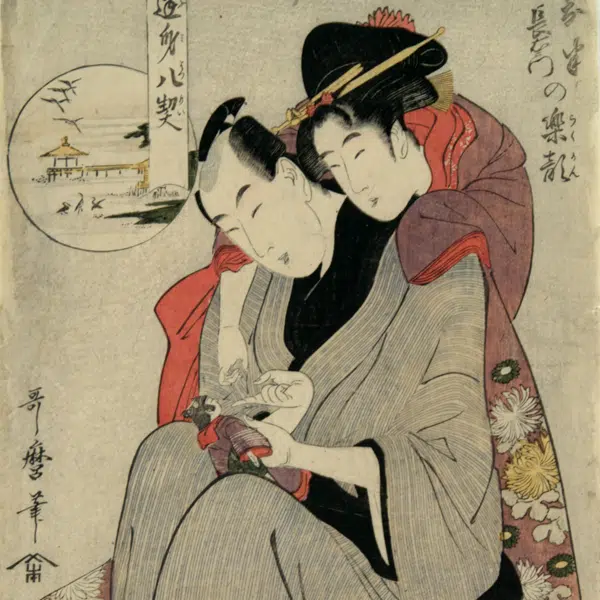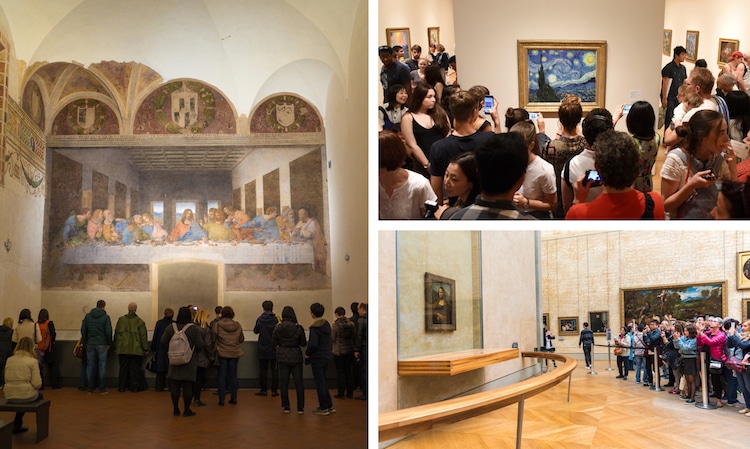
While art history comprises countless examples of exceptional art, some works have resonated more strongly than others. Spanning time, artist, and movement, these universally admired masterpieces bring audiences to museums, galleries, and historic sites across the globe.
In this art guide, we explore a selection of some of the world's most famous paintings and sculptures—and the cultural institutions they now call home.
Learn where to find 21 famous works of art.
The Mona Lisa — The Louvre (Paris, France)
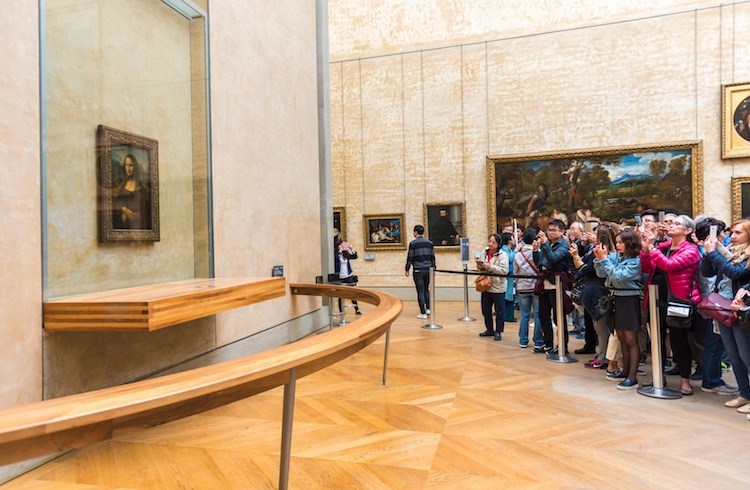
Photo: Stock Photos from Resul Muslu/Shutterstock
The Mona Lisa is arguably the most famous portrait in the world. Created by polymath Leonardo da Vinci around 1506, this painting of a softly smiling woman is a hallmark example of High Renaissance portraiture. It features an enigmatic female figure—believed to be Lisa Gherardini, the wife of cloth and silk merchant Francesco Giocondo—seated in front of a hazy landscape. It has been a permanent fixture of the Louvre Museum since 1804.
Location: The Louvre, Paris, France
The Last Supper — Santa Maria delle Grazie (Milan, Italy)
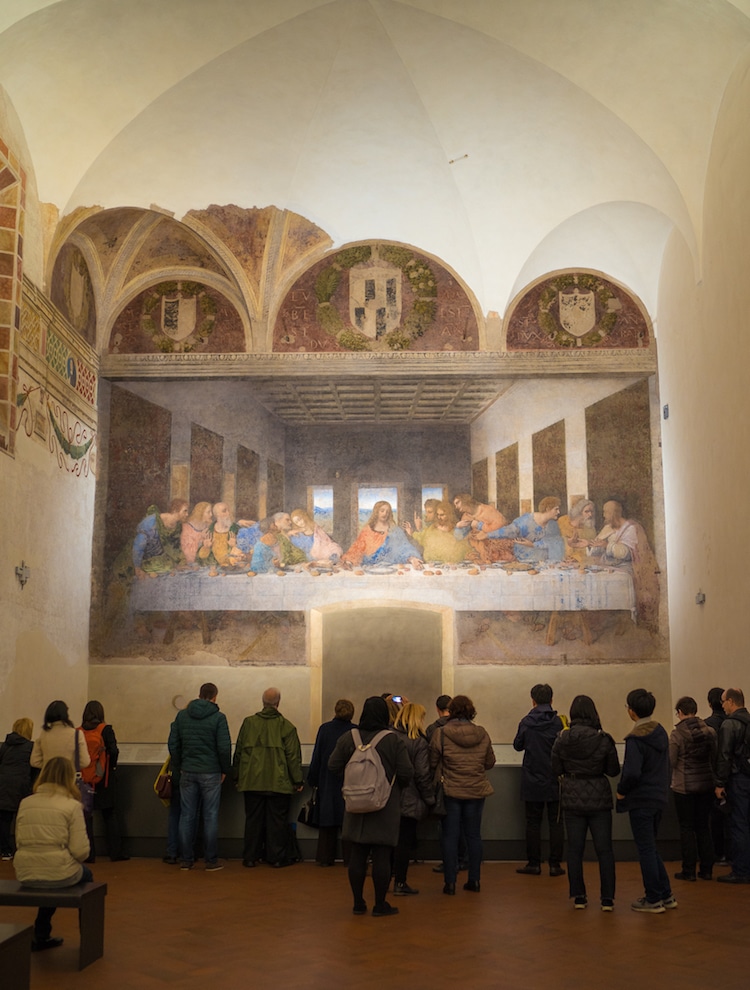
Photo: Stock Photos from HUANG Zheng/Shutterstock
In 1495, the Duke of Milan commissioned Leonardo da Vinci to paint The Last Supper—a massive 15-by-29-foot mural—in the Dominican convent of Santa Maria delle Grazie in Milan as part of a renovation project. Unlike other depictions of this subject, Leonardo opted to illustrate the moment Jesus tells his followers that one of them will betray him, placing much of the painting's focus on the figures' individual expressive reactions. Completed in 1498, the fresco has remained a gem of the convent and city ever since.
Location: Santa Maria delle Grazie, Milan, Italy
The Starry Night — MoMA (New York City, New York)

Photo: Stock Photos from Bumble Dee/Shutterstock
Post-Impressionist pioneer Vincent van Gogh painted The Starry Night while in a mental health facility in the South of France. It is a fantastical version of the view from his room at the asylum, with a dreamy sky made up of celestial swirls, stylized stars, and a radiating moon. At the time Van Gogh considered the painting a failure and gave it to his brother, Theo van Gogh, whose wife sold it to a collector in 1900. Following a string of different owners, it was acquired by New York's Museum of Modern Art in 1941.
Location: Museum of Modern Art, New York City, New York
Guernica — The Reina Sofía (Madrid, Spain)
Guernica, a large-scale Cubist painting by Pablo Picasso, is one of Spain's national treasures. It was commissioned in 1937 by the Spanish Republic government to decorate the Spanish pavilion for the upcoming World's Fair in Paris. Inspired by the ongoing civil war in Spain, Picasso chose to create a solemn, grayscale painting with an anti-war message. When the piece was sent to the United States to raise funds for Spanish refugees, Picasso said it should only be returned to Spain once it had re-established a republic. It has been in Madrid's Reina Sofía Museum since 1981.
Location: Reina Sofía Museum, Madrid, Spain
Impression, Sunrise — Musée Marmottan Monet (Paris, France)
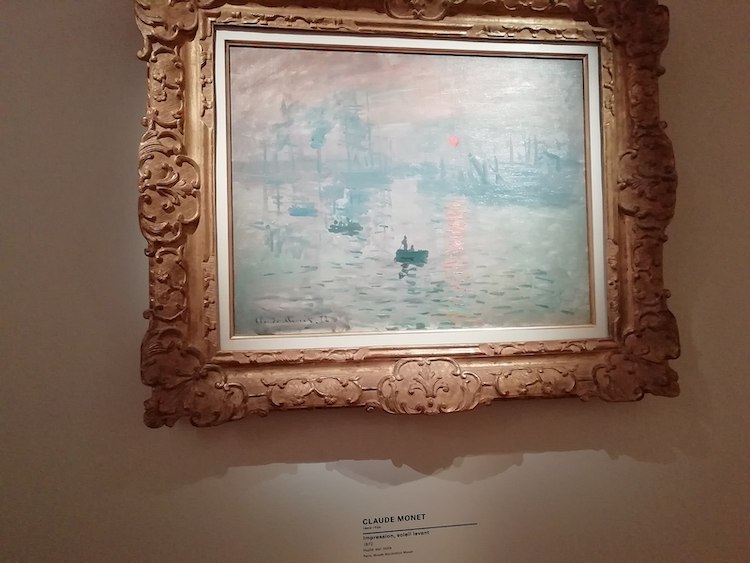
Claude Monet, “Impression, Sunrise,” 1872, Musée Marmottan Monet (Photo: ManoSolo13241324 via Wikimedia Commons, CC BY-SA 4.0)
Unlike most genres, which develop over time, the impetus of Impressionism is believed to have begun in the 1870s with a single work: Impression, Sunrise, a light and airy landscape painting by none other than Claude Monet. “A landscape is only an impression, instantaneous, hence the label they’ve given us—all because of me, for that matter,” Monet recalled. “I’d submitted something done out of my window at Le Havre, sunlight in the mist with a few masts in the foreground jutting up from the ships below. They wanted a title for the catalog; it couldn’t really pass as a view of Le Havre, so I answered: ‘Put down Impression.' Out of that, they got impressionism, and the jokes proliferated…” Today, Impression, Sunrise is part of the permanent collection of Paris' Musée Marmottan Monet.
Location: Musée Marmottan Monet, Paris, France
Girl with a Pearl Earring — The Mauritshuis (The Hague, Netherlands)
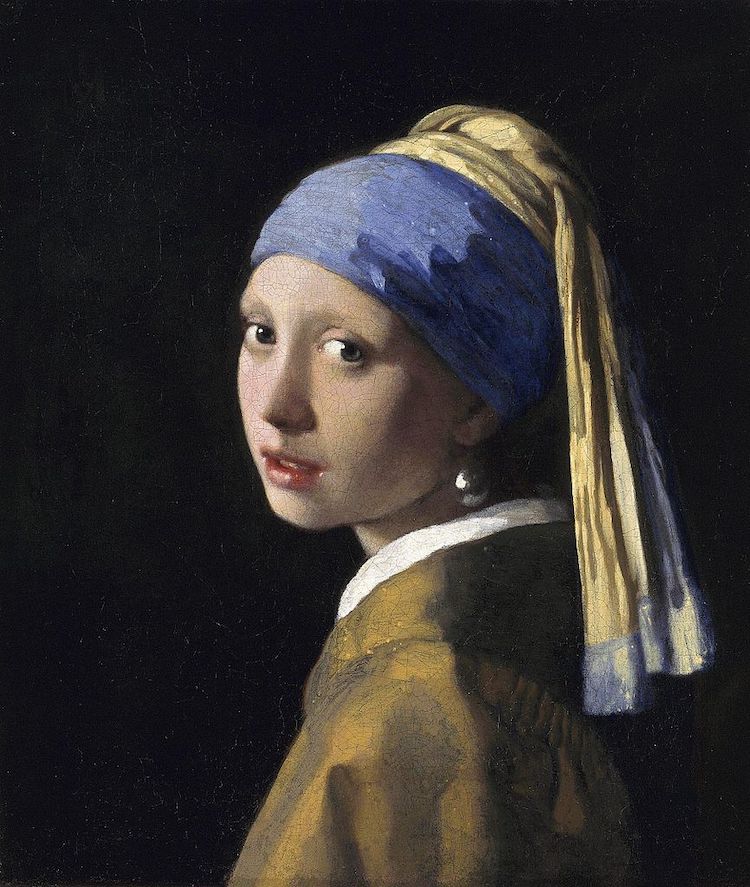
“Girl with a Pearl Earring” by Johannes Vermeer, circa 1665. (Photo: WikimediaCommons, Public domain)
Known as the “Mona Lisa of the North,” the Girl with a Pearl Earring by Old Master Johannes Vermeer is a key example of Northern Renaissance portraiture. It portrays a young woman—whose identity is unconfirmed—sitting before a dark backdrop. The setting enhances the exquisite blue and yellow turban covering her hair, and the large, tear-shaped pearl earring, which twinkles from the shadows. It has been housed in The Hague's Mauritshuis—known for its extensive collection of Dutch Golden Age paintings—since 1902.
Location: The Mauritshuis, Hague, Netherlands
The Birth of Venus — The Uffizi Gallery (Florence, Italy)
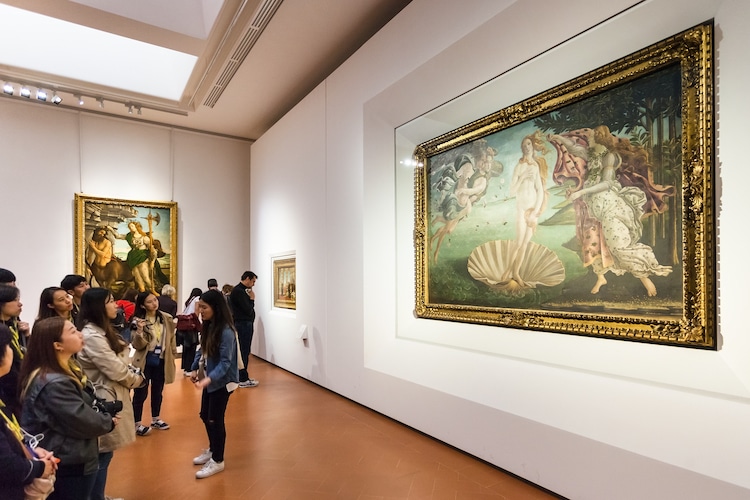
Photo: Stock Photos from vvoe/Shutterstock
The Birth of Venus (1486) is one of the most famous Renaissance paintings. Created by Sandro Botticelli in 1486, this large-scale work shows the recently-born Venus, the Roman goddess associated with love and beauty, standing in an enlarged scallop shell. It is one of the first paintings to display classical inspiration and feature a prominent female nude. The Birth of Venus and its sibling, Primavera, has been a staple of Florence's famed Uffizi Gallery since the early 20th century.
Location: The Uffizi Gallery, Florence, Italy
David — Galleria dell’Accademia (Florence, Italy)
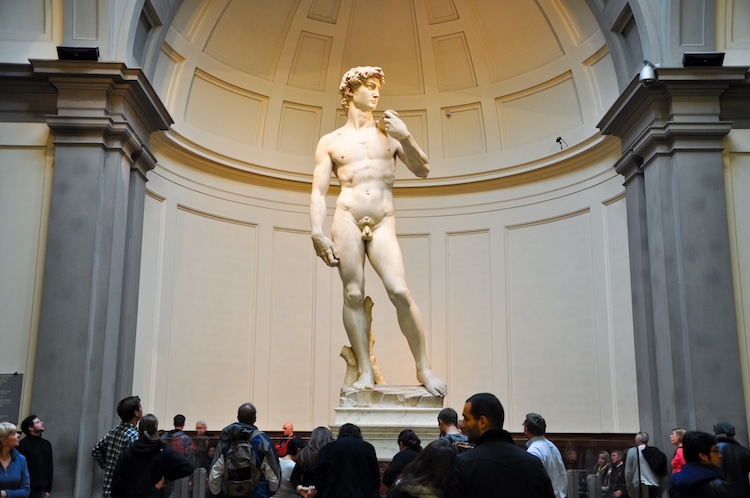
Photo: Stock Photos from lornet/Shutterstock
Since its debut in the early 16th century, David has captivated artists and art connoisseurs alike. Created by Renaissance artist Michelangelo when he was just 26-years-old, it portrays the Biblical character of David minutes before his battle with Goliath. The massive scale and lifelike anatomy have made it one of the most beloved marble sculptures. Although it was originally intended to be displayed outside, the statue has been housed by the Galleria dell'Accademia since 1872.
Location: Galleria dell'Accademia, Florence, Italy
Las Meninas — Museo del Prado (Madrid, Spain)
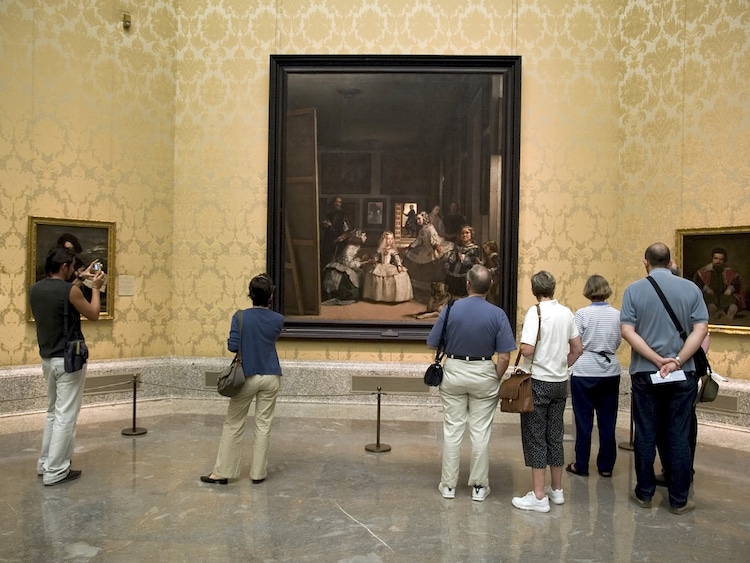
Photo: rubiphoto/Depositphotos
For over 350 years, art lovers have been fascinated by Las Meninas. This complex oil painting by Diego Velázquez is an incredibly nuanced depiction of life in the court of King Philip IV of Spain. The title, which translates to Ladies in Waiting, is a turning point in art history for the way in which Velázquez broke from the stiff formal portraits that typically defined royalty. This masterpiece can now be seen in Madrid's Prado Museum.
Location: Museo del Prado, Madrid, Spain
The Kiss — Österreichische Galerie Belvedere (Vienna, Austria)
Painted at the height of the artist's Golden Phase, Gustav Klimt's The Kiss (1908–1909) is his most beloved creation and one of the most romantic paintings in the world. It depicts an embracing couple—each clad in a geometrically printed robe—kneeling in a grassy patch of wildflowers. The man cranes his head forward to kiss the woman, whose arm is cradled around her partner's neck to keep him close. The dazzling painting was purchased by the Austrian government and placed in Vienna's Österreichische Galerie Belvedere Museum.
Location: Österreichische Galerie Belvedere Museum, Vienna, Austra
The Garden of Earthly Delights — Museo del Prado (Madrid, Spain)
Hieronymus Bosch's triptych, The Garden of Earthly Delights, is a scary painting with amazingly surreal details. Scattered across the three unfolding scenes are hybrid animals, make-believe machines, and other imaginative inventions. Although this work was from Northern Europe, it was purchased by King Philip II of Spain in 1591. Centuries later, the triptych was moved to the Prado Museum during the Spanish Civil War for safekeeping, and it has remained there ever since.
Location: Museo del Prado, Madrid, Spain
A Sunday Afternoon on the Island of La Grande Jatte — The Art Institute of Chicago (Chicago, Illinois)
A Sunday Afternoon on the Island of La Grande Jatte was painted by Georges Seurat, a pioneer of Pointillism. He applied millions of colorful dots onto the canvas to create an image of a typical outing for Parisians living in the 1880s. While it received mixed reviews during the artist's lifetime, it has since become an icon of the Post-Impressionist movement and dazzles visitors to the Art Institute of Chicago—where it is permanently housed—on a daily basis.
Location: Art Institute of Chicago, Chicago, Illinois
American Gothic — The Art Institute of Chicago (Chicago, Illinois)
While American artists in the mid-20th century were flocking to the coasts, Iowa-born painter Grant Wood gained fame in the Midwest. His enigmatic masterpiece American Gothic was inspired, in part, by the discovery of a “very paintable house.” Known as the Dibble House, this humble abode inspired a story in Wood's mind, and he placed models (a dentist and his daughter) of people he imagined would live in the home.
The completed painting sparked confusion—people assumed the farmer and the woman depicted were married—but it was met with overall positive reception. Wood entered it in a contest at the Art Institute of Chicago and won $300 and a permanent spot in the museum, where it remains today.
Location: Art Institute of Chicago, Chicago, Illinois
Liberty Leading the People — The Louvre (Paris France)
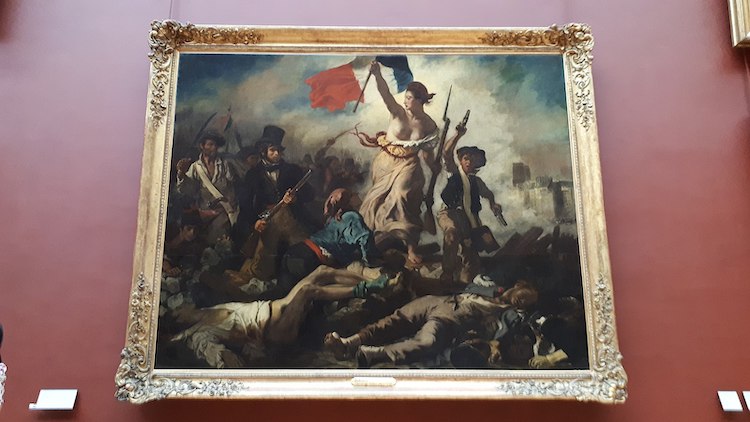
Eugène Delacroix, “Liberty Leading the People,” 1830, The Louvre (Photo: Ulemas7 via Wikimedia Commons, CC BY-SA 4.0)
Painted in the fall of 1830, Liberty Leading the People offers contemporary insight into the French Revolution. Romantic painter Eugène Delacroix sets the painting on the streets of Paris (Notre-Dame Cathedral can be seen in the smoke-filled background) with a group of Parisians following the personification of the French Republic, called Marianne. It has been drawing crowds to the Louvre for years.
Location: Louvre, Paris, France
Nighthawks — The Art Institute of Chicago (Chicago, Illinois)
Lifelong New Yorker Edward Hopper held that “great art is the outward expression of an inner life in the artist, and this inner life will result in his personal vision of the world.” While this intimate artistic approach is apparent in many of Hopper's masterpieces, it is particularly apparent in Nighthawks, an iconic oil painting that has helped define the Modernist movement. Within months of its completion, the piece was sold to the Art Institute of Chicago, where it has remained ever since.
Location: Art Institute of Chicago, Chicago, Illinois
The Arnolfini Portrait — The National Gallery (London, United Kingdom)
Nearly 100 years before Leonardo da Vinci created the Mona Lisa, Flemish artist Jan van Eyck displayed an early mastery of oil portraiture with his painting The Arnolfini Portrait. It depicts a wealthy merchant—presumed to be Giovanni di Nicolau di Arnolfini—and his wife in a lavishly decorated room that showcases their opulent wealth. Van Eyck achieved this depth of color by using the wet-on-wet technique, in which he added layers of wet paint before the previous layers had dried. The painting's amazing details can be seen up-close at London's National Gallery.
Location: The National Gallery, London, United Kingdom
The Luncheon on the Grass — Musee d'Orsay (Paris, France)
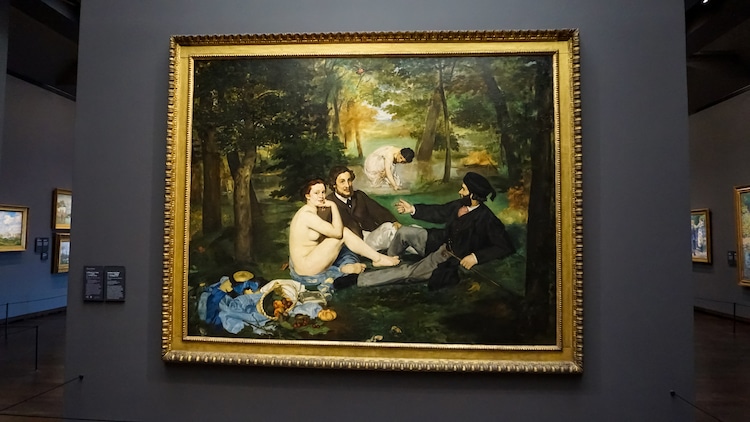
Photo: Marina113/Depositphotos
Working in a unique style, Manet bridged the gap between two major art movements: Realism and Impressionism. One piece that illustrates this distinctive approach is The Luncheon on the Grass (“Le déjeuner sur l'herbe”), a large-scale painting that has become one of Manet's—and modern art‘s—most famous works. It portrays an outdoor picnic among a group of people, in which one of the female subjects is nude. Today, The Luncheon on the Grass is one of Paris' Musée d'Orsay's highlights.
Location: Musée d'Orsay, Paris, France
The Scream — The National Gallery (Oslo, Norway)
Did you know that there are four versions of Edvard Munch‘s The Scream? The most recognized rendition was actually the second attempt of four, and made with tempera paint on cardboard. It captures a moment of extreme human anguish and suffering, in which a solitary figure holds his face between his hands and screams. This famous version can be found in Norway's National Gallery.
Location: The National Gallery, Oslo, Norway
The Persistence of Memory — MoMA (New York City, New York)
Surrealist Salvador Dalí referred to The Persistence of Memory (1931) as a “hand-painted dream photograph.” Though set in a realistically rendered landscape, The Persistence of Memory features bizarre subject matter evocative of a dream, most notably the iconic melting clocks, which are draped across the imaginative landscape, and the anthropomorphic form. The peculiar painting has perplexed visitors at the Museum of Modern Art since 1934.
Location: Museum of Modern Art, New York City, New York
The Night Watch — The Rijksmuseum (Amsterdam, The Netherlands)
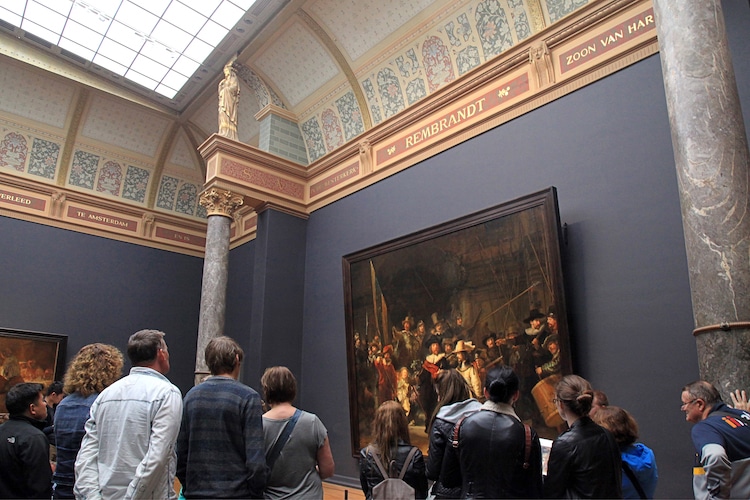
Photo: Stock Photos from InnaFelker/Shutterstock
The Company of Frans Banning Cocq and Willem van Ruytenburgh, better known as The Night Watch is a large-scale masterpiece by Rembrandt van Rijn. Commissioned by Captain Bannick Cocq and 17 members of his civic militia, the painting features a total of 34 figures. Rembrandt uses composition as well as light and shadow to create a hierarchy within The Night Watch. It has the honor of being the Rijksmuseum's most famous painting since 1885.
Location: Rijksmuseum, Amsterdam, Netherlands
The Luncheon of the Boating Party — The Phillips Collection (Washington DC)
For years, viewers have been captivated by Luncheon of the Boating Party, an Impressionist masterpiece by Pierre-Auguste Renoir. In addition to its refined brushwork and eye-catching color palette, the piece is celebrated for simultaneously showcasing Renoir's three signature subjects: portraiture, still-life depictions, and en plein air settings. In 1923, art collector Duncan Phillips acquired the painting, which he described as “one of the greatest paintings in the world.” The prized piece remains on permanent display in The Phillips Collection.
Location: The Philips Collection, Washington D.C.
This article has been edited and updated.
Related Articles:
8 Real-Life Locations of Famous Paintings You Can Visit Today
8 Iconic Artists and the Inspiration Behind Their Favorite Subjects
Fascinating Paintings Reveal the Unique Studios of 5 Famous Artists
20 of the World’s Most Famous Museums Offering Free Museum Days
